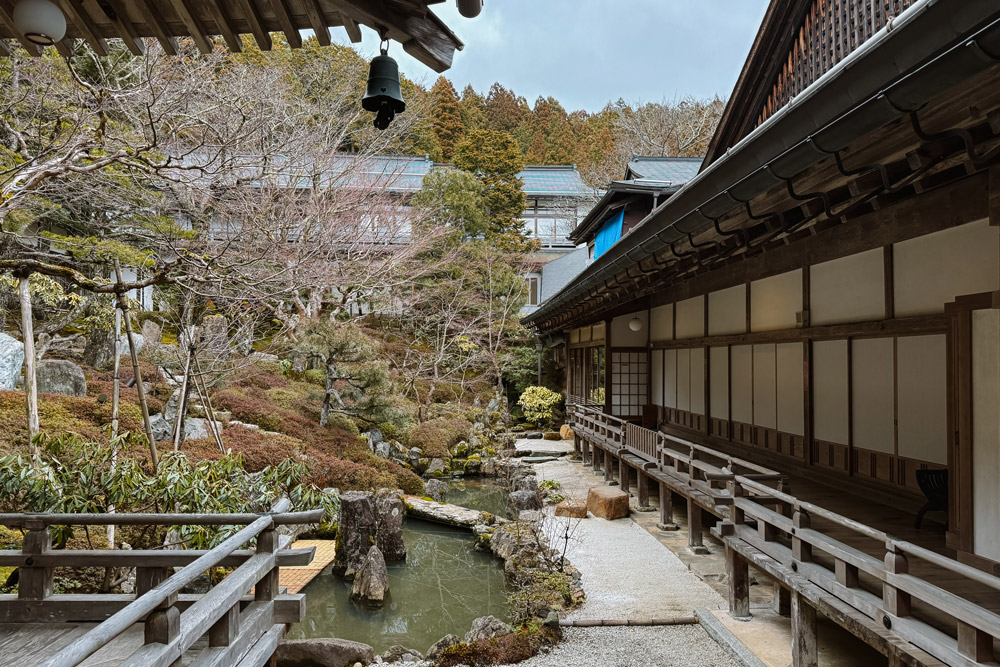Did you know you can stay overnight at an active Buddhist temple in Japan? I spent one night in Rengejoin Temple in Koyasan, and below, I’ll share my experience!
Visiting a Buddhist temple during your time in Japan is one, but sleeping in one is another. Temple Lodging, or Shukubo, can be a unique activity to add to your Japan bucket list.
A temple stay is more than just a room for the night. You get to live among the monks, participate in their rituals and prayer sessions, and eat their traditional Shojin Ryori meals.
Koyasan is a popular spot for shukubo as it’s quite foreigner-friendly. You can easily book the temple stays on sites like Booking.com, it’s relatively easily accessible from Osaka, most temples have some English-speaking staff and there are a lot of temples offering temple stays.
During my visit to Koyasan, I stayed in Rengejoin Temple. If you’re wondering whether you should book a temple stay in Koyasan too, read on to learn about my experience!
* Our stay at Rengejoin was part of a press trip with Visit Wakayama. All views are my own.
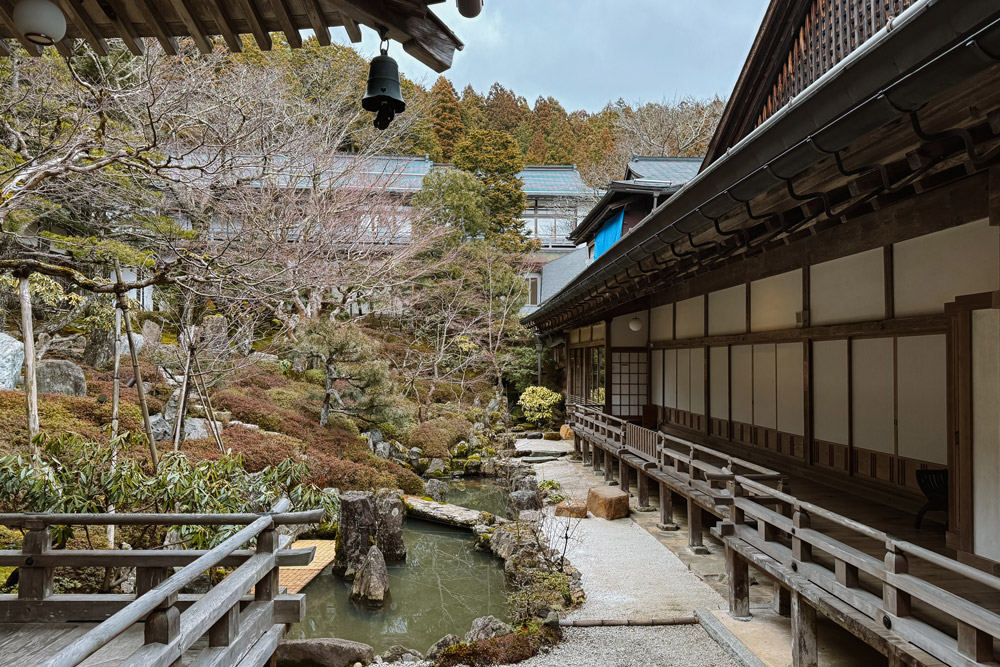
Contents
What is Shukubo?
Shukubo means temple lodging. Visitors get to sleep in an active Buddhist temple, but it’s more than just a room for the night. You get a glimpse into the lives of the monks, their rituals and traditions.
As part of a shukubo stay, you can join the monks in their meditation session and morning ritual. While the specific rituals can vary depending on what temple you stay in, they usually one of the following: scripting, a fire ritual or chanting.
Similar to staying in a ryokan, dinner and breakfast are also included with a shukubo. And in true Buddhist fashion, the meals served are fully vegan. The traditional cuisine of the monks is called Shojin Ryori and focuses on five flavours (sweet, sour, salty, bitter, and umami), five cooking methods (raw, baked, fried, boiled and steamed) and five colours (red, blue, black, yellow, and white).
Fresh and seasonal vegetables and mountain plants are used, which means that the ingredients of the meals will change throughout the year.
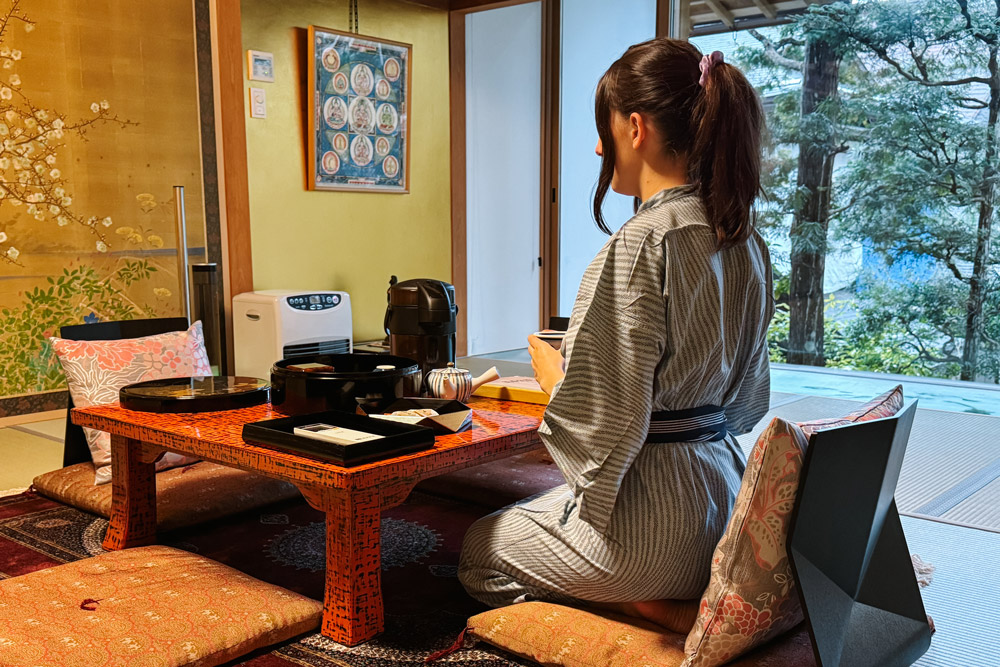

Shukubo isn’t something new or something just for foreign tourists. It dates back centuries, as pilgrims and monks travelled great distances and would stay overnight at various temples. While it started as something for the upper class, since the Edo Period, the lower class has also been allowed to stay overnight in these temples.
On top of that, you don’t have to be a practising Buddhist to stay here. People of all faiths and origins are welcome. You also don’t have to participate in the sessions and rituals if you’re not comfortable doing so. However, they make this experience so unique, that I would highly recommend you to join them!
While there are temples all across Japan offering shukubo, Koyasan is known to be one of the best places for it. With a history of over 1,200 years, Koyasan is the centre of Shingon Buddhism and is home to 117 active temples. Over 50 of them offer Shukubo.
Since it’s such a popular spot for temple lodging, most temples in Koyasan that offer this service have some English-speaking staff and make it easy to book stays on popular booking sites like Booking.com. It’s a great spot to go for your first shukubo, plus there is a lot to see and do in this town too!
Koyasan Temple Stay: My Experience
As soon as I learned that staying overnight in an active Buddhist temple was something you could do, I immediately put it on my Japan bucket list. I’ve been interested in the spiritual side of Japan for a very long time, so having the opportunity to learn more about it and see it up close was something I very much wanted to do.
Using the Koyasan World Heritage Ticket, my husband and I made our way to Koyasan from Osaka in the morning. Since our Osaka Airbnb was located near Shin-Imamiya station, we got on a train towards Koyasan from there within around 1.5 hours. The train took us to Gokurakubashi Station, where we boarded the cable car that took us up to Mount Koya within five minutes.
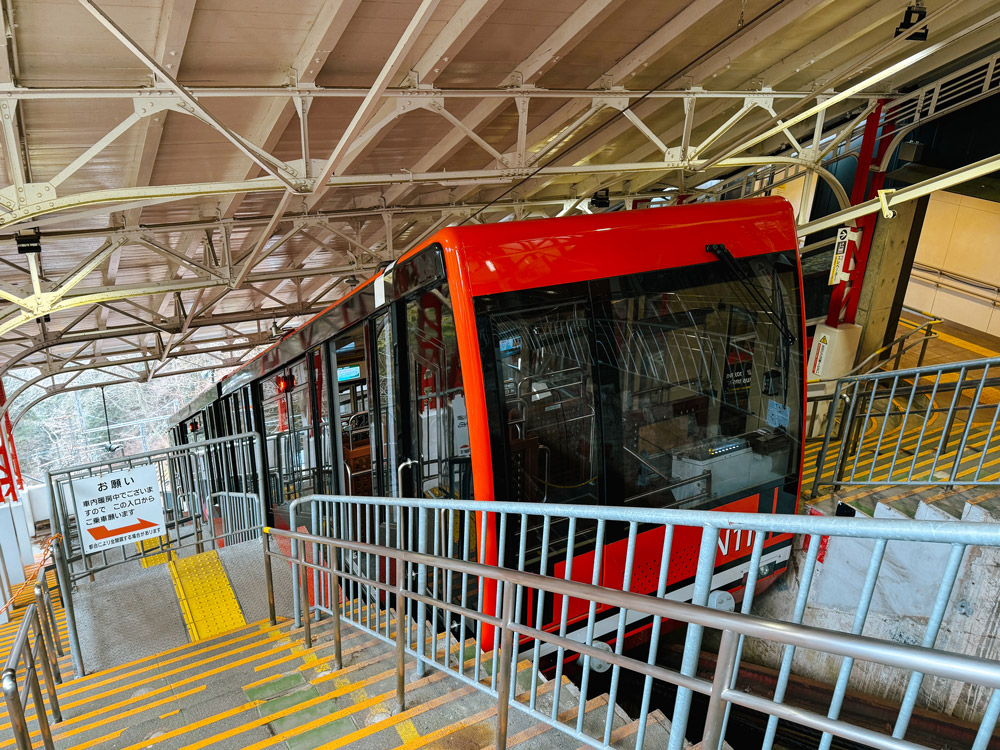

From Koyasan Station, one of the buses can take you to the town centre. All of these are included in the World Heritage Ticket, making it great value for an overnight stay.
We arrived in Koyasan around 1PM, leaving us with some time to grab lunch and visit a couple of temples before it was time for our temple check-in.
Checking in (3PM)
At 3PM, we were able to check into Rengejoin. We were guided to our room, the Royal Suite, and I was already blown away at the beauty of this temple. There was a small, well-kept garden in the middle, alongside beautiful wooden hallways.
The room included a tatami living room, a separate bedroom with two Western beds and a bathroom looking out of the garden. It was stunning, one of the nicest rooms I’ve ever stayed in.
On the table, we found some green tea and a little treat. We also found a booklet filled with useful information. Not only did it cover our schedule in detail, but it also included some background information about the temple, the history of Koyasan and some details about the meals we would enjoy later on.
The meditation session didn’t start until 5PM, so we had a couple of hours to unwind in our room. And with such a lovely view, that wasn’t difficult at all.
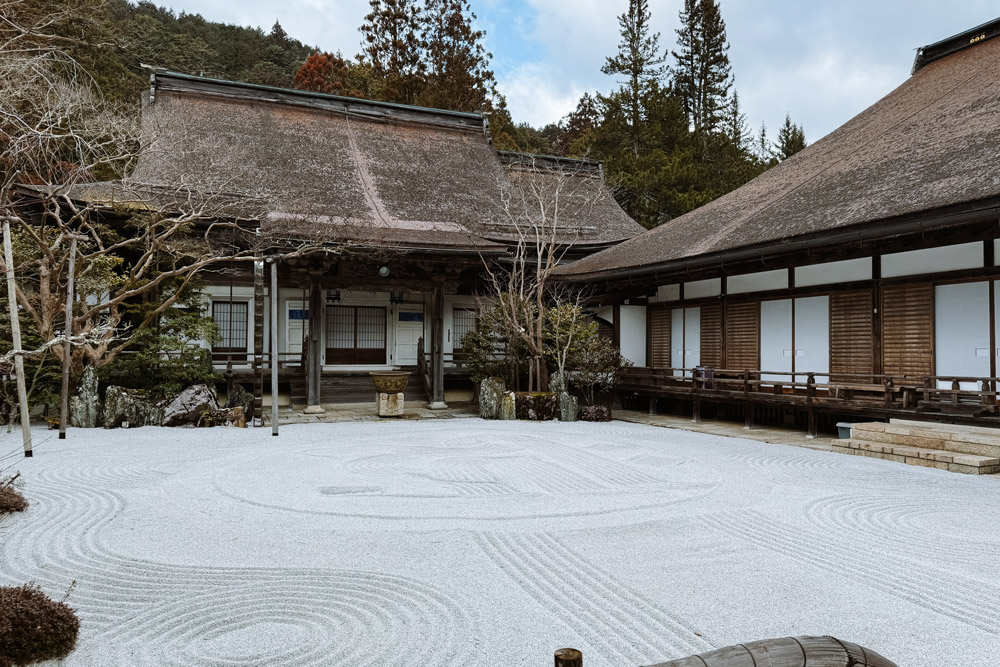





Ajikan Meditation Session (5PM)
What makes a temple stay in Koyasan so special is that you get to join the monks for some of their day-to-day activities, including the rituals and ceremonies held at the temple. Every temple has its own ceremonies, so it may differ depending on which temple you stay with.
At Rengejoin, you can join the Ajikan meditation session at 5PM. Please note that you don’t HAVE to join if you don’t want to – but I definitely would! Joining these ceremonies adds so much to the experience. It’s part of what you pay for, right?
Five minutes before the mediation session started, the bell rang and was heard from all across the temple grounds. I read some information about Ajikan meditation in the booklet in our room before we headed over, but the monk quickly explained to focus on your breathing and count from one to ten. Once you reach ten, start over.
I’ve been interested in mediating for a while and started to take it more seriously over lockdown in 2020. Sadly, the habit of meditation didn’t quite stick as well as I’d hoped it would… After lockdown, the business of everyday life took over and I skipped a few too many morning meditation sessions to even call it a habit now. Even at home, five minutes of meditating is now a struggle.


So knowing I was about to sit in a sacred hall in a temple in the middle of the Wakayama mountains, meditating for 40 minutes next to monks who have dedicated their lives to this was a little intimidating. I thought I would struggle, but I was excited to give it a go. If not now and here, then when and where?
During the session, my mind drifted off quite often. Counting to 10 without a random thought popping into my mind seemed nearly impossible, but as time passed, it started to become easier. “I should do this more often at home.”
When the bell rang again, I thought it was to highlight the mid-point of the meditation session. There is no way 40 minutes have passed already! But indeed, the 40 minutes were over and the meditation session ended. I was stunned at how quickly it had gone by and, secretly, very proud of myself for sticking with it the whole time.


I also attended a Zen meditation session with the head monk in Kinosaki Onsen. You can book this through the tourism board’s website.
Shojin Ryori Dinner (6PM)
We walked out of the Main Hall from our meditation session, feeling rather relaxed, and were guided into the dining room. It was time for dinner.
A temple stay in Koyasan is much more than just a room, it’s a glimpse into the lives of the monks. And a big part of that is trying the traditional Buddhist cuisine. This type of cooking, also known as Shojin Ryori, is fully vegan and puts the essence of each ingredient at the centre.
We walked into the dining area where the food was already beautifully put together on countless little plates. I didn’t even know where to begin – it all looked so beautiful, so delicious!




As I explain in more detail in my Koyasan guide, Shojin Ryori focuses on five flavours (sweet, sour, salty, bitter, and umami), five cooking methods (raw, baked, fried, boiled and steamed) and five colours (red, blue, black, yellow, and white).
For dinner, we had a selection of tofu, tempura, hot pot, freshly cut vegetables and mountain plants, pickled vegetables, soups and rice. Even if you don’t get to stay overnight in a temple in Koyasan, please check out a restaurant or temple that offers this as lunch – it’s tasty! Plus, super healthy 😉
The care that was put into these dishes was incredible. Every single ingredient shines, and it felt like you were tasting the essence of all the food in front of us. Every flavour was very distinguished, no two flavours blurred together. All the textures were very consistent too. And the plating was stunning, you can really tell how much respect they have for each ingredient.
Okunoin Night Tour (7PM)
While not included as part of the Shukubo at Rengejoin, Richard and I signed up for the night tour of one of Koyasan’s most popular sights: Okunoin.
With over 200,000 gravestones, Okunoin is the largest cemetery in Japan. Kobo Daishi’s mausoleum can also be found here. He founded Koyasan and brought Shingon Buddism to Japan. It’s also believed he created the Japanese writing systems Hiragana and Katakana.
You can visit Okunoin for free at any time, but the night tour adds a lot of value to your visit. Our guide, a monk who lives in Koyasan, guided us through the dimly lit path, sharing stories about Okunoin and Kobo Daishi. Even though I’d done extensive research before my visit, I learned so much.


The iconic lanterns in Okunoin are lit up beautifully at night, and we heard some of the flying squirrels. Since it was February, it was very cold (it even started to snow!), but the tour was worth coming out for.
Rengejoin’s curfew is at 9PM. Our tour guide made sure everybody got back to their temples on time. We got on the bus (included in the tour price) and made it back to Rengejoin at 8:50PM.
Once we got back, we had a couple of hours to relax and enjoy the bath before heading to bed. Rengejoin has a public bath for both men and women, however, since we had a private bath looking out over the garden in our room, we used that one instead.


Morning ceremony (6AM)
Many temples in Koyasan let their guests join their morning prayers too. Rengejoin’s sutra reading starts at 6AM, so we’d set our alarm for 5:45AM.
The beds in the Royal Suite at Rengejoin were Western beds. They were so incredibly comfortable, it was hard to get up this early! The chilly February air didn’t make it any easier to leave our room, but we made it to the Main Hall before the bell rang at 5:55AM.
Inside the Main Hall, the heaters were already working over hours, welcoming us into a cosy hideaway from the cold and dark outside. We sat down and the ritual began.
The monks started their sutra reading, which went on for about half an hour. It was rather impressive to witness. It wasn’t hard to remember to be grateful to be a part of something this special, even this early in the morning.
After the sutra reading was completed, the monk told us a story in both Japanese and English. It included some of the legends of Koyasan and the values of Shingon Buddhism.
When the ceremony was over, the doors of the main hall opened. It was a bit surreal walking out into the morning light, as it was still pitch black when we entered the room an hour earlier. It looked like it was going to be a beautiful day though!
Shojin Ryori Breakfast (7AM)
Right after the morning ceremony, we headed straight to breakfast. Similarly to dinner, the perfectly assembled dishes were ready for us when we entered the room. I was stunned at the detail, the precision and the flavours of each individual ingredient.
Breakfast is also in full Shojin Ryori style. Fully vegan, made from the freshest local ingredients. The room we had breakfast in had a small space heater as that morning was particularly cold! However, we got to enjoy our breakfast comfortably.
Checking out (9AM)
We took around 45 minutes for breakfast, enjoying every last bit that was on the plates. Afterwards, we headed back to our room for a final hour of relaxation.
We enjoyed the view of the garden from our large windows one last time, got ready for the day and checked out at 9AM. Fully relaxed and ready for a few hours of exploring. In my Koyasan travel guide, you can read more about what other things you can do in Koyasan.
Tips for a Perfect Koyasan Temple Stay
To prepare for your temple stay in Koyasan, please consider the following:
1. Leave your Luggage in Osaka
Dragging your suitcases to and around Koyasan is not the easiest thing to do. To enjoy your time in Koyasan without having to worry about your luggage, it’s best to leave them overnight in Osaka.
Some temples will allow you to store your luggage before check-in and after check-out, but this still means you’ll have to get your luggage to and from the temple.
There is not a lot of space on the cable car up Mount Koya, nor is there much space in the buses around the town. Save yourself (and others!) the trouble, and pay to store your big luggage in a storage locker in Osaka.
2. Bring Warm Clothes
Koyasan lies over 800 meters high up in the mountains. It’s considerably colder here than in Osaka! Our temple room at Rengejoin was heated very nicely, but I’ve read reviews of other temples where the rooms were a bit chilly.
But even with a cosy room, I’m still very glad I brought some warm clothes for the Okunoin night tour (one of the best things to do in Koyasan!) and for generally exploring the town during the day. Better to bring a couple of extra layers and not use them than regret it!


3. Research the Temple You Want to Stay in
While the temples in Koyasan all follow Shingon Buddhism, every temple is different. The rooms are different, the ceremonies are different and the things they offer to their guests are different.
For example, not all temples hold a fire ritual in the morning (something that is mentioned in many Koyasan guides and articles). If you don’t want to miss this, make sure your temple offers this. Ekoin is one of the temples that hold a fire ceremony. Our temple, Rengejoin, holds a sutra-chanting ritual in the morning – something I personally loved being a part of.
The schedules also vary per temple. Double-check check-in times, what times the ceremonies are held and when you can expect to have dinner and breakfast. Our morning ceremony started at 6AM, for example, which meant our alarm was set for 5:45AM.
Also check the curfew, especially if you want to take part in the Okunoin night tour. For example, people who stay at Renge-in can’t partake in the night tour due to their bathing hours and curfew. (Despite the similar names, our temple, Rengejoin, was completely fine with the tour! These are two different temples!).
Some temples offer Western beds, while others only offer futons. Make sure you’re comfortable with the options available.
How Much Does it Cost to Stay at a Koyasan Temple?
Staying overnight in a temple in Koyasan usually costs somewhere between ¥10,000 and ¥50,000+ per person per night. It can be more expensive, depending on the temple you stay in and what room you pick.
There are always more luxurious rooms available, but some more budget-friendly temple rooms can also be found. Also remember that dinner and breakfast are included in these prices.
The time of year also influences the prices of the temple stays. During peak season, you can expect to pay more, similar to any other type of accommodation in Japan.
Koyasan Temple Stay Conclusion
Staying overnight in a temple in Koyasan is something that’ll stay with me for a very long time. I’m so glad I finally got to visit this place and have the opportunity to join the monks in their daily routines for one day.
While it’s possible to visit Koyasan on a day trip, I do think that adding an overnight stay here adds so much. Not only is the temple stay an unforgettable experience, but the night tour of Okunoin adds so much too. I think it’s 100% worth it.
Source link
